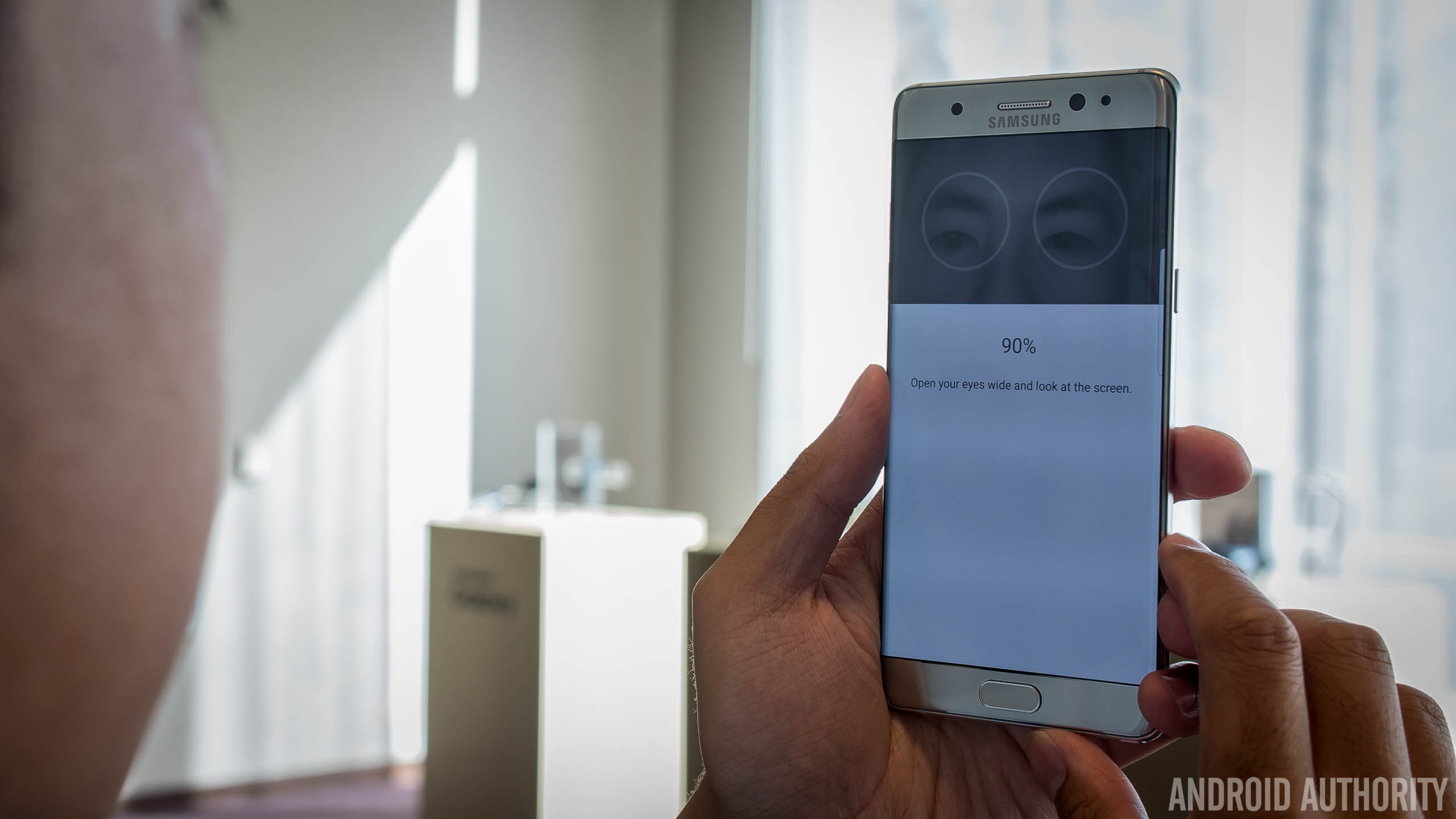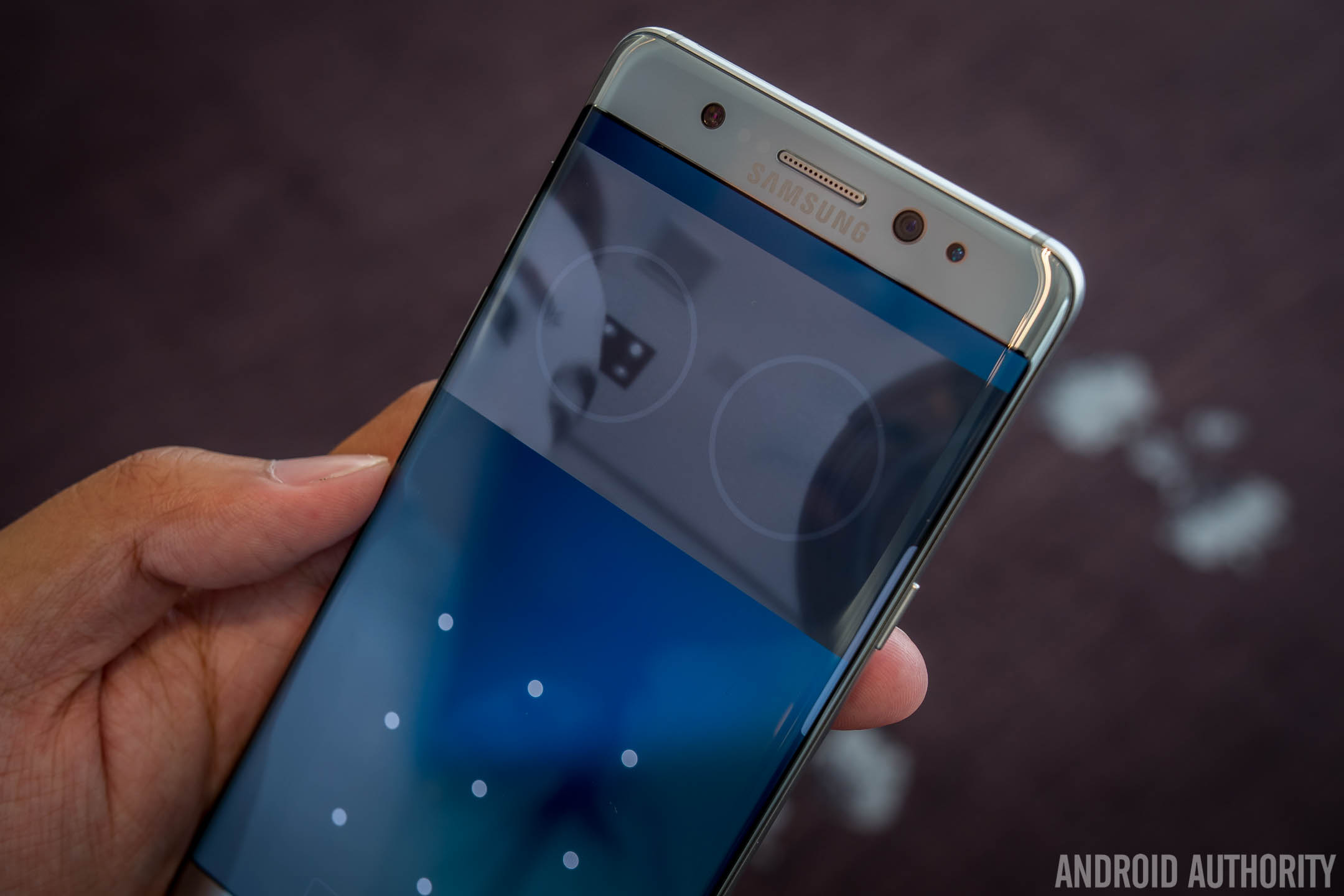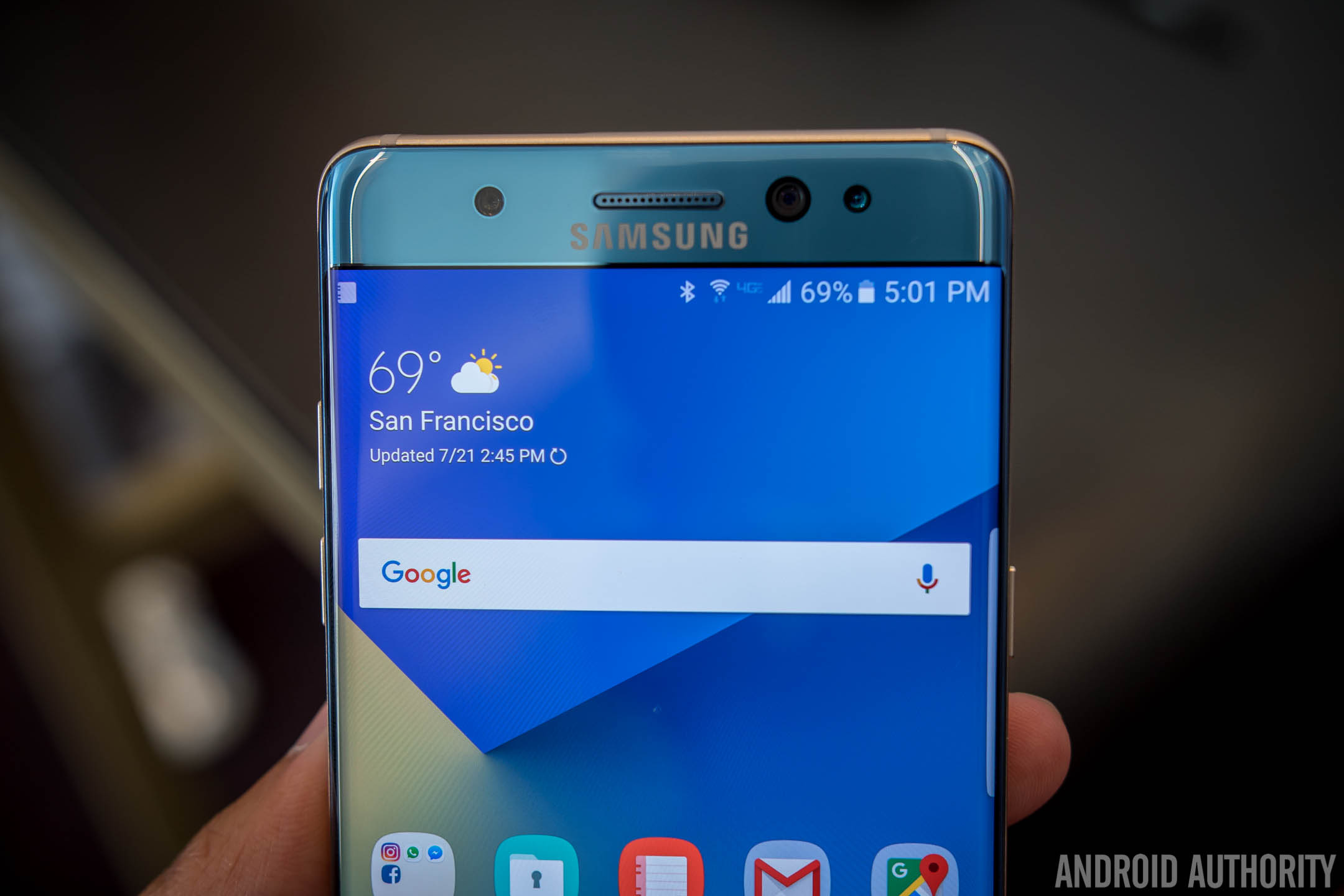Affiliate links on Android Authority may earn us a commission. Learn more.
Samsung explains how the Galaxy Note 7 iris scanner works

With iris scanning arriving in the Galaxy Note 7, you don’t need to touch the device to verify your identity and can access the phone by just looking at the screen. Our tests with the iris scanner in the were pretty positive, particularly given the number of times we have seen the same security feature in other devices failing to respond, or proving unreliable.

For the uninitiated, iris scanning uses mathematical pattern recognition of images of the iris – the thin, colored ring of your eye that opens and shuts the pupil to regulate the amount of light reaching the retina. Just like your fingerprints, your iris pattern is also uniquely different and cannot be changed or replicated, making devices with iris scanning technology highly secure.
Now, in a post on its website, Samsung explains the hardware and technology behind its iris scanner in the Galaxy Note 7. According to the company, the device stores your registered iris information as an encrypted code safely in its hardware using its KNOX security platform. Whenever you want to access content, such as a protected app, the device first captures your iris pattern for recognition, extracts and digitizes it, and then proceeds to match it with the encrypted code to provide access. You can be sure that no one else apart from you can access your device in case it is stolen or lost because the Note 7 registers the iris information of only one person.

Samsung has made all this possible by including a dedicated iris camera for recognizing the composition of the user’s eyeballs. The dedicated iris camera uses a special image filter to receive and recognize the reflected images of the irises through an infrared light on the other end of that panel. The light emitted from the Galaxy Note 7’s display allows the scanner to receive data even in low light environments.
Along with iris scanning technology, the Galaxy Note 7 offers a separate Secure Folder for storing private apps and files that can be accessed using your fingerprint, iris scanner, pattern, or PIN. You can use the Secure Folder to keep your private and personal information, like your banking details, completely separate on the device, as well as block access to specific games or content for children. If this sounds familiar to you, that’s because it is similar to Samsung’s KNOX security platform found on its other devices that allows you to manage two different profiles for work and normal usage.
The Note 7 also brings Samsung Pass, a security feature which you can use to log into websites on the Samsung Internet Browser using biometric authentication without having to input your username and password. Samsung now plans to partner with major financial institutions such as Bank of America, Citibank and U.S. Bank to allow the integration of its iris scanner into mobile banking apps.
Even as Samsung looks to expand the use of its iris scanning technology, you can be sure that the company is likely to introduce the biometric security feature in other future devices, including its mid-range smartphones.
Related Note 7 content:
- Galaxy Note 7 S View Standing Cover and Battery Pack hands on
- Samsung Galaxy Note 7 availability: what we know so far (Updated)
- Samsung Galaxy Note 7 vs Galaxy S7 Edge First Look
- Galaxy Note 7 vs Galaxy Note 5 first look: the difference a year makes
- Galaxy Note 7 color comparison: gold, silver, black & blue
- This is the Samsung Galaxy Note 7
Let us know in the comments below if you would like to see the Galaxy Note 7’s iris scanner in other Samsung smartphones!